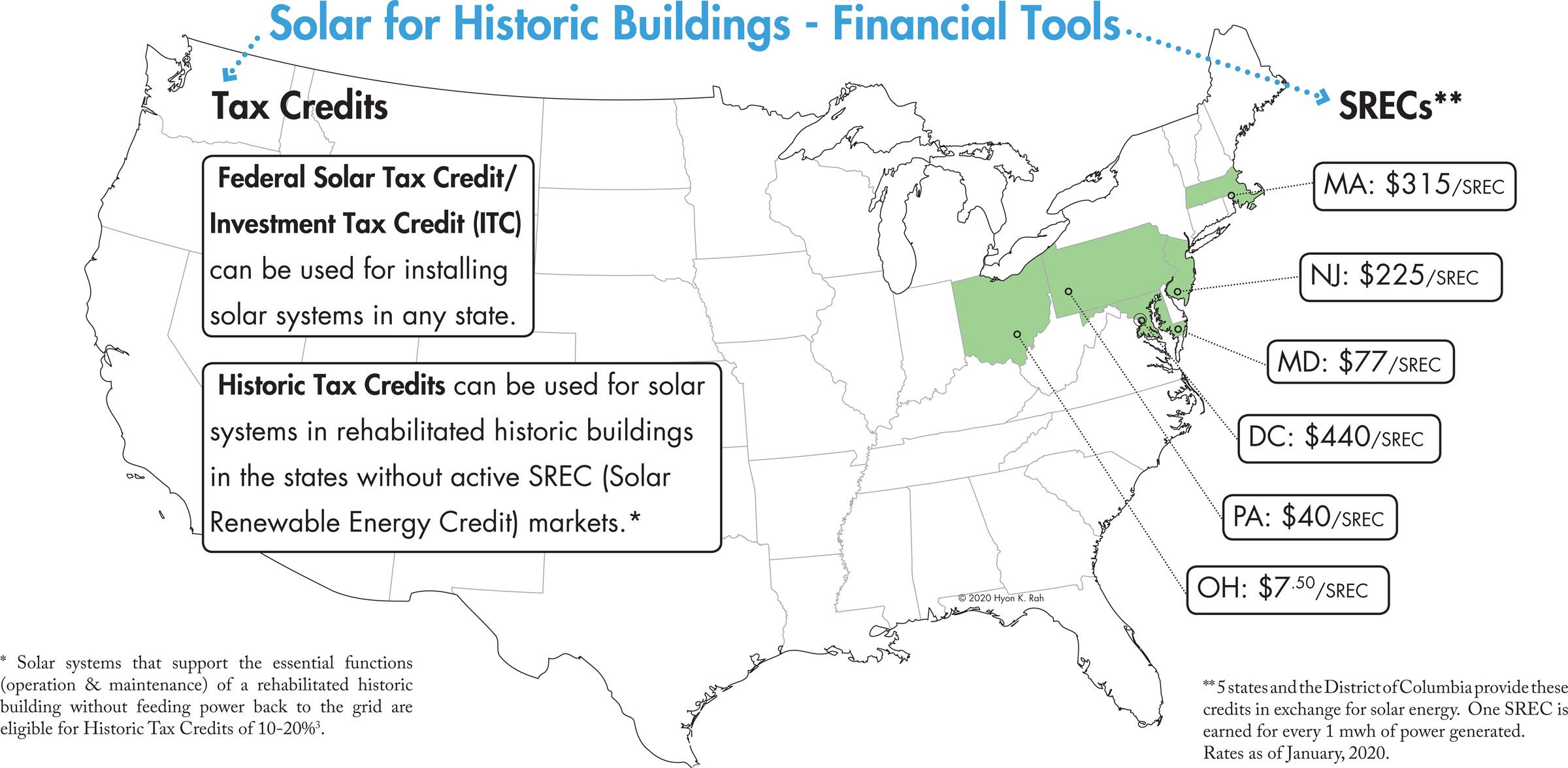Solar 20/20 National Conference - American Solar Energy Society (ASES)
By Hyon K. Rah, July 2020

There is no denying that historic places have not been the most sought-after spots for solar development – in fact, avoidance unless absolutely necessary has been more typical for many developers.
With major policy and regulatory changes around greenhouse gas (GHG) reduction and resilience building, those days might be numbered especially for those operating in urban areas. Major cities around the county are starting to adopt ambitious energy performance standards for buildings that would affect not only new constructions but also existing building stocks, including numerous historic buildings.
As ruling out renewable energy will be a non-option for most urban buildings, creating an environment for historic buildings to embrace solar energy is in urgent order. Rather than settling for the status quo of finding the most inconspicuous spot to install PV panels to make the case, this could be an opening to integrate solar energy development priorities to those of historic preservation.
Gentrification and the regulatory gap between the protection of federal and regional and local historic places have placed historic preservation in a vicarious position, in search of newly defined relevance. Integrating solar development into historic preservation could be an effective way to do so while advancing clean energy goals.

